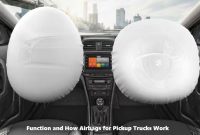In recent decades, safety has become a top priority in the development of automotive technology. One of the most significant innovations in this regard is the Anti-lock Braking System (ABS), a braking system designed to prevent a vehicle’s wheels from locking during sudden braking.

What is an Anti-Lock Braking System (ABS)?
An Anti-lock Braking System, or ABS, is an electronic system that prevents the wheels from locking when the driver presses the brake pedal hard. In emergency situations, such as sudden braking on slippery or wet roads, locked wheels can cause the vehicle to skid or become difficult to control.
From the Jes-Lesics Indonesia video, the first time you feel ABS activating, you’re driving on a slippery downhill road. The brake pedal is pressed, but the car doesn’t slide wildly, as if the wheels haven’t lost traction on the asphalt. Control remains intact, and the body remains composed in the driver’s seat.
How ABS Works
Its function is to prevent the vehicle’s wheels from locking during sudden braking, so the vehicle can remain under control and avoid skidding.
Basic Principles of ABS
When the driver suddenly applies the brakes, the vehicle’s wheels can stop rotating (lock), especially on slippery roads or at high speeds. If the wheels lock, the vehicle will lose traction and become difficult to control.
ABS prevents this by automatically and quickly regulating brake pressure, so the wheels continue to rotate even when the vehicle is braking hard.
Anti-lock Braking System Main Components and Their Functions
For the ABS system to work optimally, several main components are integrated. Here’s a complete explanation:
Wheel Speed Sensors
These sensors monitor the rotational speed of each wheel in real time. Information from these sensors is sent to the ECU (Electronic Control Unit). If a wheel slows down too quickly (a sign of impending lockup), this sensor detects it.
Electronic Control Unit (ECU)
The brain of the ABS system receives data from the wheel speed sensors and analyzes it. If it detects a wheel impending lockup, the ECU sends a signal to activate the valves and pump to adjust the brake pressure.
Hydraulic Valves
These valves regulate the flow of brake pressure to each wheel according to instructions from the ECU. The valves can be in three positions:
- Fully open: Normal brake pressure flows to the wheel.
- Closed: Brake pressure is held to prevent it from increasing.
- Partially open/released: Pressure is reduced to prevent wheel lockup.
Hydraulic Pump
This pump is used to restore brake pressure that has been released by the valve. After the pressure is released to prevent wheel lockup, the pump will work to re-establish pressure in the brake system to maintain effective braking.
ABS Warning Light
Although not part of the mechanical system, this light is important for alerting the driver if there is a problem with the ABS system. If the light remains on while the engine is running, it means the ABS system is malfunctioning and needs to be checked.
ABS in Brief
- The driver applies the brakes suddenly.
- The speed sensor detects a wheel about to lock.
- The ECU regulates the brake pressure on that wheel by opening and closing the valve.
- The pump maintains the pressure and keeps it ready for re-applying.
- All of this process occurs automatically and very quickly (tens of times per second), without driver intervention.
ABS System Advantages
Some of the advantages of this system:
Prevents Wheel Lockup During Sudden Braking
The main advantage of ABS is that it prevents wheel lockup when the driver brakes suddenly. Locked wheels lose traction and cause the vehicle to skid uncontrollably. With ABS, brake pressure is automatically regulated to keep the wheels turning even when braking hard.
Vehicle Remains Controllable
ABS allows the driver to maintain control of the vehicle’s direction while braking, especially when avoiding obstacles or making sudden turns. Without ABS, locked wheels would make the vehicle difficult to control and could even skid.
Reducing the Risk of Skidding on Slippery Roads
On wet, sandy, or snowy road surfaces, ABS helps prevent skidding by maintaining vehicle stability. This makes braking safer and more responsive in various weather and road conditions.
Maintaining a More Effective Braking Distance
ABS generally helps reduce braking distance on slippery or uneven road surfaces, although on dry surfaces, results can vary depending on vehicle type and tire condition. However, the stability it provides remains a significant advantage.
Provides Confidence While Driving
With an ABS system, drivers can be more confident in emergency situations. They know the system will help maintain control of the vehicle during emergency braking, reducing panic in critical situations.
The Anti-lock Braking System (ABS) works by involving sensor technology and electronic controls that automatically regulate brake pressure to prevent wheel lockup. With ABS, drivers can maintain control of the vehicle’s direction during emergency braking, thereby increasing road safety./satya



